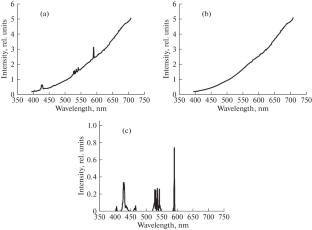激光发射光谱法实时控制Inconel 718直接激光沉积过程
IF 0.9
4区 材料科学
Q4 MATERIALS SCIENCE, CHARACTERIZATION & TESTING
引用次数: 0
摘要
采用原子发射光谱法研究了激光选择性熔炼各种合金时产生的气体等离子体羽流。结果表明,保护气体的种类对光谱特性有影响。与氩气相比,氦气作为工艺气体的使用减少了整体发光和单个元素对光谱的贡献,表明这些元素在激光辐射照射下通过蒸发的损失更低。本文章由计算机程序翻译,如有差异,请以英文原文为准。

Real-Time Control of Direct Laser Deposition Process of Inconel 718 Using Laser Emission Spectroscopy
The gas-plasma plume generated during laser selective melting of various alloys was investigated using atomic emission spectroscopy. It was demonstrated that the type of protective gas used affects the spectral characteristics. The use of helium as a process gas compared to argon reduces overall luminescence and the contributions of individual elements to the spectrum, indicating lower losses of these elements through evaporation under laser radiation exposure.
求助全文
通过发布文献求助,成功后即可免费获取论文全文。
去求助
来源期刊

Russian Journal of Nondestructive Testing
工程技术-材料科学:表征与测试
CiteScore
1.60
自引率
44.40%
发文量
59
审稿时长
6-12 weeks
期刊介绍:
Russian Journal of Nondestructive Testing, a translation of Defectoskopiya, is a publication of the Russian Academy of Sciences. This publication offers current Russian research on the theory and technology of nondestructive testing of materials and components. It describes laboratory and industrial investigations of devices and instrumentation and provides reviews of new equipment developed for series manufacture. Articles cover all physical methods of nondestructive testing, including magnetic and electrical; ultrasonic; X-ray and Y-ray; capillary; liquid (color luminescence), and radio (for materials of low conductivity).
 求助内容:
求助内容: 应助结果提醒方式:
应助结果提醒方式:


